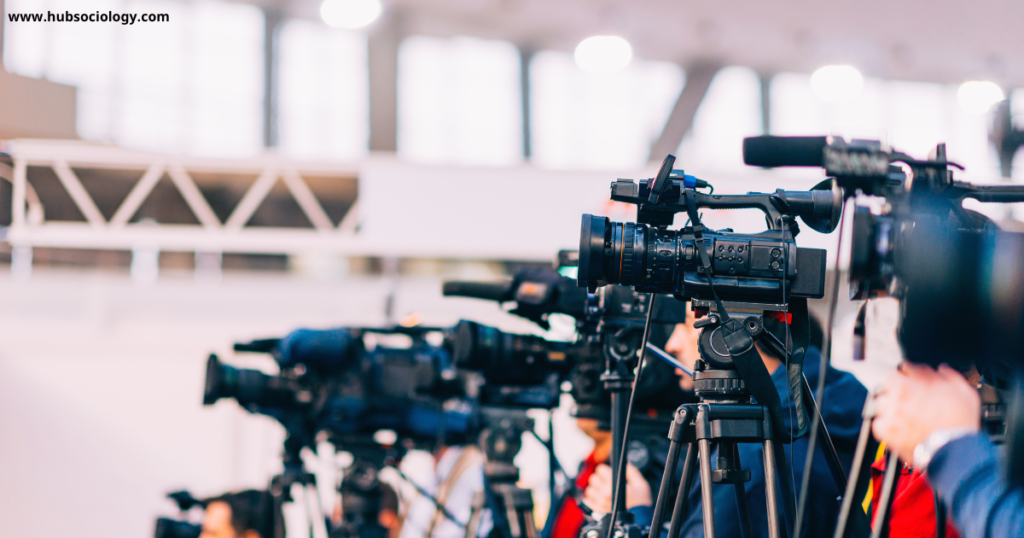Introduction

In the digital age, media plays a crucial role in shaping public opinion, cultural norms, and social behavior. Among the various forms of media, paid media—which includes advertisements, sponsored content, influencer marketing, and promoted social media posts—has become a dominant force in influencing societal values, consumer behavior, and even political discourse. From a sociological standpoint, paid media does not merely sell products; it constructs realities, reinforces ideologies, and perpetuates social inequalities.
This article explores the sociological implications of paid media, analyzing its role in consumer culture, identity formation, social stratification, and power dynamics. By examining theories from prominent sociologists and critical media scholars, we will assess how paid media both reflects and shapes societal structures.
1. Paid Media and Consumer Culture
The Rise of Consumerism
Paid media is a driving force behind consumer culture, a phenomenon where social status and personal identity are increasingly tied to consumption. Sociologist Jean Baudrillard argued in The Consumer Society (1970) that modern societies are defined by the endless cycle of buying and selling, where goods are not just functional but symbolic. Advertisements create artificial desires, convincing individuals that happiness and success are achievable through material possessions.
For example, luxury brands like Rolex or Gucci do not just sell watches or handbags; they sell an image of prestige and exclusivity. Paid media reinforces this by associating products with aspirational lifestyles, often leading to excessive consumption and debt.
Commodification of Everyday Life
Marxist sociologists argue that paid media contributes to the commodification of social life, where even personal relationships, emotions, and identities are marketed. Dating apps (e.g., Tinder Premium), fitness influencers selling workout plans, and self-help gurus promoting paid courses all exemplify how personal growth and human connections are turned into profitable ventures.
The more time people spend engaging with paid content, the more their behaviors and preferences are shaped by corporate interests rather than organic social interactions.
2. Paid Media and Identity Formation
The Construction of Self Through Brands
Sociologist Erving Goffman’s dramaturgical theory suggests that individuals perform different roles in social interactions, much like actors on a stage. Advertisements dictate fashion trends, beauty standards, and even personality traits (e.g., “cool,” “successful,” “rebellious”).
For instance, Nike’s “Just Do It” campaign does not just sell shoes; it sells an identity of determination and athleticism. Consumers internalize these messages, often shaping their self-concept around brand affiliations.
Influencer Culture and Social Comparison
The rise of influencer marketing has intensified social comparison, a concept explored by Leon Festinger in his Social Comparison Theory (1954). Paid promotions by influencers create unrealistic benchmarks for beauty, success, and happiness. Young people, in particular, may experience anxiety or low self-esteem when comparing their lives to the curated, sponsored content they see online.
Moreover, influencers often promote products (e.g., weight loss teas, luxury items) that are financially out of reach for many, reinforcing feelings of inadequacy among lower-income groups.
3. Paid Media and Social Stratification

Reinforcement of Class Divisions
Paid media often perpetuates class inequalities by associating certain products with elite status. Pierre Bourdieu’s concept of cultural capital explains how taste and consumption patterns signal social class. Luxury ads (e.g., Mercedes, Chanel) target affluent audiences, while discount brands market to working-class consumers, reinforcing economic hierarchies.
Additionally, algorithmic advertising on platforms like Facebook and Google tailors ads based on user data, meaning wealthier individuals see different promotions than lower-income users. This creates a feedback loop where economic disparities are both reflected and exacerbated by paid media.
Gatekeeping and Media Monopolies
Critical theorists like Noam Chomsky and Edward Herman argue in Manufacturing Consent (1988) that media is controlled by corporate elites who shape public perception to serve their interests. Paid media is not neutral—it prioritizes profitable narratives over marginalized voices.
For example, pharmaceutical companies heavily advertise prescription drugs, normalizing medicalization while overshadowing alternative health discourses. Similarly, fast-food chains dominate ad spaces, contributing to public health crises like obesity while healthier, less-advertised options struggle for visibility.
4. Paid Media and Political Influence
The Commercialization of Democracy
Paid political advertising has a profound impact on elections and public opinion. The 2016 and 2020 U.S. elections demonstrated how targeted ads on Facebook and Google could sway voter behavior through micro-targeting and misinformation.
Sociologist Jürgen Habermas warned about the colonization of the public sphere by commercial interests, where democratic discourse is replaced by manipulative marketing. When political campaigns rely on paid media rather than grassroots engagement, democracy becomes a commodity sold to the highest bidder.
Propaganda and Ideological Control
Paid media is also a tool for ideological control. Governments and corporations use it to promote nationalism (e.g., military recruitment ads), corporate agendas (e.g., oil companies greenwashing their image), or even suppress dissent (e.g., shadow-banning activists while boosting paid content).
5. Resistance and Alternative Media
Despite its pervasive influence, there are counter-movements against paid media’s dominance. Independent journalism, ad-free platforms (e.g., Wikipedia), and grassroots social media campaigns challenge corporate narratives. Sociologist Manuel Castells highlights the power of networked social movements (e.g., #BlackLivesMatter, #MeToo) in bypassing traditional paid media to create organic change.
Conclusion
Paid media is more than a marketing tool—it is a sociological force that shapes identities, reinforces inequalities, and influences political power. While it drives economic growth, it also fosters consumerism, alienation, and ideological manipulation. A critical sociological approach is necessary to understand its impact and advocate for media literacy, ethical advertising, and democratic media reforms.
As society becomes increasingly mediated by paid content, the challenge is to reclaim public discourse from corporate control and ensure that media serves the people, not just profits.

Topic Related Questions
5-Mark Questions (Short Answer)
- Define paid media and give two examples.
- How does paid media contribute to consumer culture?
- Explain Baudrillard’s concept of hyperreality in relation to advertisements.
- What is the role of influencers in shaping social identity?
- How does paid media reinforce class divisions?
- Briefly discuss the concept of cultural capital in advertising.
- What is algorithmic advertising, and how does it affect social stratification?
- How does paid political advertising influence democracy?
- Give an example of how corporations use paid media for ideological control.
- What are some alternatives to corporate-dominated paid media?
10-Mark Questions (Brief Essay)
- Discuss how paid media constructs identities using Goffman’s dramaturgical theory.
- Analyze the role of paid media in promoting consumerism with reference to Marxist sociology.
- How does influencer marketing contribute to social comparison and mental health issues?
- Examine Bourdieu’s concept of cultural capital in the context of luxury advertisements.
- Critically evaluate how paid media reinforces economic inequalities in society.
- Discuss the impact of targeted political advertising on democratic processes.
- Explain Habermas’s theory of the public sphere in relation to corporate-controlled media.
- How does paid media contribute to the commodification of personal life? Provide examples.
- Discuss the role of paid-media in shaping beauty standards and body image.
- How can alternative media challenge the dominance of corporate-paid media?
15-Mark Questions (Long Essay)
- Critically analyze the sociological impact of paid-media on identity formation and social behavior. (Use Goffman, Baudrillard, and Bourdieu)
- “Paid media perpetuates social inequalities.” Discuss this statement with reference to class and power dynamics. (Use Marxist and critical theory perspectives)
- Evaluate the role of paid-media in shaping political opinions and its consequences for democracy. (Refer to Habermas, Chomsky, and recent election case studies)
- How does paid media influence consumer culture, and what are its effects on societal values? (Use Baudrillard’s hyperreality and consumer society theories)
- Examine the ethical concerns surrounding influencer marketing and its impact on youth identity. (Discuss social comparison theory and mental health implications)
- Discuss the role of algorithmic advertising in reinforcing social stratification and economic disparities. (Use Bourdieu’s cultural capital and digital sociology perspectives)
- “Paid-media is a tool for ideological control.” Critically assess this statement with examples. (Refer to propaganda models and corporate hegemony)
- How can society resist the negative effects of paid-media? Discuss alternative media and media literacy solutions. (Use Castells’ networked social movements)
- Analyze the relationship between paid-media, commodification, and the erosion of authentic social interactions. (Use Marxist and postmodernist critiques)
- “Advertising doesn’t just sell products; it sells lifestyles and ideologies.” Discuss this statement sociologically. (Use theories of consumer culture and symbolic interactionism)
